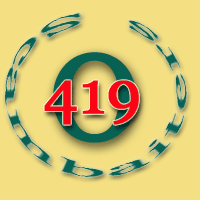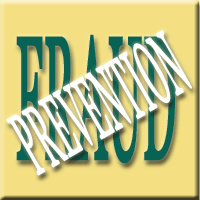
• Home •
Victim´s Story •
Fraud Prevention •
Project GSO •
Hall of Shame •
LINKS •

How to detect Counterfeit Check Scams!
The most common Internet scams
If someone you don’t know wants to pay you by check or money order and wants you to wire a portion of the money back, beware! It’s a scam that could cost you thousands of dollars.
Tips for recognizing and avoiding counterfeit check scams (provided by CUNA Mutual Group)
There are many variations of the counterfeit check scam. It could start with someone offering to buy something you advertised, pay you to do work at home, give you an “advance” on a sweepstakes you’ve supposedly won, or pay the first installment on the millions that you’ll receive for agreeing to have money in a foreign country transferred to your account for safekeeping. Whatever the pitch, the person may sound quite believable.
Counterfeit check scammers hunt for victims. They scan newspaper and online advertisements for people listing items for sale, and check postings on online job sites from people seeking employment. They place their own ads with phone numbers or e-mail addresses for people to contact them. And they call or send emails or faxes to people randomly, knowing that someone will take the bait.
They often claim to be in another country. The scammers say it’s too difficult and complicated to send you the money directly from their country, so they’ll arrange for someone in the U.S. to send you a check.
They tell you to wire money to them after you’ve deposited the check. If you’re selling something, they say they’ll pay you by having someone in the U.S. who owes them money send you a check. It will be for more than the sale price; you deposit the check, keep what you’re owed, and wire the rest to them. If it’s part of a work-at-home scheme, they may claim that you’ll be processing checks from their “clients.”
You deposit the checks and then wire them the money minus your “pay.” Or they may send you a check for more than your pay “by mistake” and ask you to wire them the excess. In the sweepstakes and foreign money offer, they tell you to wire them money for taxes, customs, bonding, processing, legal fees, or other expenses that must be paid before you can get the rest of the money.
The checks are counterfeit but they look real. In fact, they look so real that even tellers may be fooled. Some are phony cashiers checks, others look like they’re from legitimate business accounts. The companies whose names appear may be real, but someone has dummied up the checks without their knowledge.
You don’t have to wait long to use the money, but that doesn’t mean the check is good. Under federal law (Regulation CC), financial institutions have to make the funds you deposit available — usually within one to five business days (sometimes longer), depending on the type of check. But just because you can withdraw the money does not mean the check is good, even if it’s a cashiers check. It can take weeks for the counterfeit or forgery to be discovered and the check to bounce.
You are responsible for the checks you deposit. That’s because you’re in the best position to determine the risk — you’re the one dealing directly with the person who is arranging for the check to be sent to you. When a check bounces, the financial institution deducts the amount that was originally credited to your account. If there isn’t enough to cover it, the financial institution may be able to take money from other accounts you have at that institution, or sue you to recover the funds.
There is no legitimate reason for someone who is giving you money to ask you to wire money back. If a stranger wants to pay you for something, insist on a cashiers check for the exact amount, preferably from a local credit union or bank, or a credit union or bank that has a branch in your area.
Don’t deposit it — report it! Report counterfeit check scams to the National Fraud Information Center/Internet Fraud Watch, a service of the nonprofit National Consumers League, at www.fraud.org or (800) 876-7060 . The information will be transmitted to the appropriate law enforcement agencies.
Tips:
Ways to verify a check include:
• Inspect the check carefully to ensure it contains all the legal elements of a check.
• Amount of the check, in figures and words, should match. Often this amount is machine "impressed" on official bank checks.
• Account number should be encoded in MICR ink (should not be shiny in appearance).
• Ensure the drawer’s signature appears on the check; watch for tracing lines, "shaky" writing. Often facsimile signatures are used on official bank checks, with a second, original signature required for amounts exceeding a designated dollar amount.
• Perforations -- checks are generally perforated on at least one side.
• Routing and transit numbers appearing in the MICR line and elsewhere on the check should be consistent. • Inspect the check for erasures, errant marks, such as additions or deletions, or other alterations. • Contact the financial institution on which the check is drawn for authentication that the check is valid with no outstanding claims for loss, stolen or destroyed instrument. Verify if the person whose signature appears on the check on behalf of the bank is authorized to sign official checks of the bank.
• IMPORTANT: Independently verify the item to verify its authenticity. Do not rely on information printed on the face of the check, such as phone numbers or name/location of bank, because in a convincing scam, these numbers will often connect directly to the scam artists or their associates.
• Find the bank’s telephone number from a reliable source, such as a bank directory, the bank’s web site or directory assistance.
• Verify as much information as possible -- check number (is it in normal sequence of other official checks issued by the bank), payee, issue date, amount and authorized signatory. Ask if the bank’s official checks bear any security features, such as watermarks, security threads, background patterns, high-resolution borders, void pantograph, etc.
If there is any doubt as to the collectibility of the check, do not accept the check for deposit or encashment. Send the check to the issuing financial institution for collection. Ask that proceeds be wired directly to the customer’s account.
As an alternative to sending the item for collection, deposit the check to the customer’s account, and place a Reg. CC exception hold. Under Reg. CC, the entire amount of non-local checks can be held for up to 11 business days before making the money available for customer’s use, if the bank can evidence "reasonable cause to doubt collectibility."
In the case of a cashier’s check or other official check of a bank, if the check contains any questionable feature, erasures, alterations, etc., the depositary bank has a "reasonable cause to doubt collectibility."
Reporting Fraud
In the event that you do detect fraud or have been a victim, please use the contact information below. Also, please forward a copy of the entire inquiry and/or correspondence with that individual to FindRentals.com so that we may block any further emails from that address.
• FTC toll free hotline: 877-FTC-HELP (877-382-4357 )
• FTC online complaint form (www.ftc.gov)
• Canadian PhoneBusters hotline: 888-495-8501
• Internet Fraud Complaint Center (www.ic3.gov)
• Internet Fraud Information (www.firstgov.gov/Citizen/Topics/Internet_Fraud.shtml)
• FBI (www.fbi.gov)
© by GSO • Contact